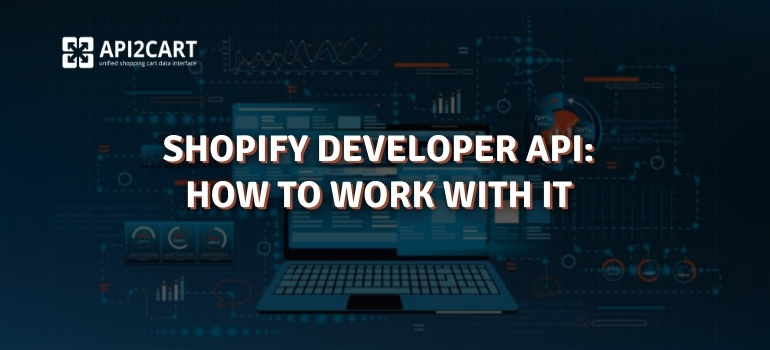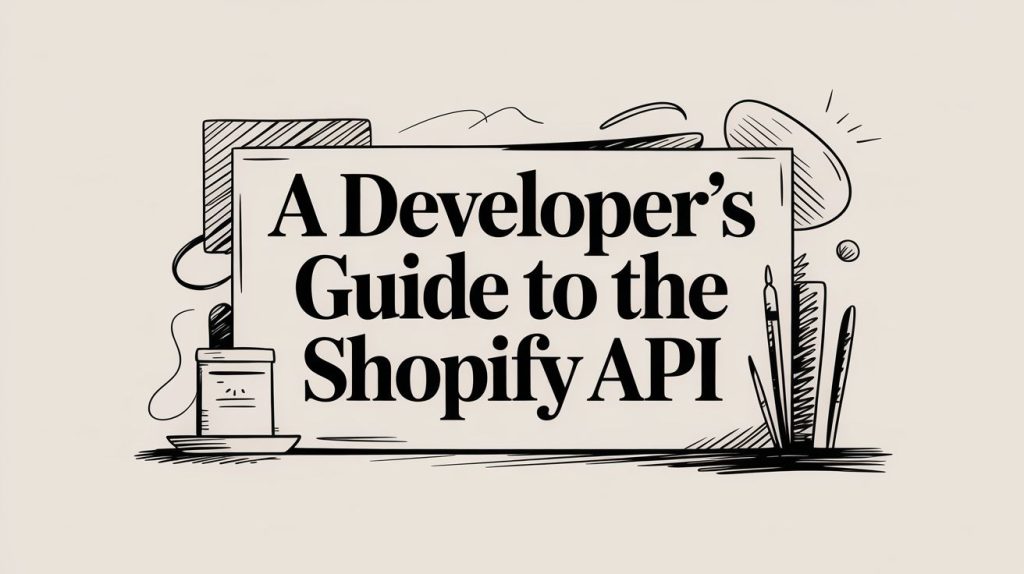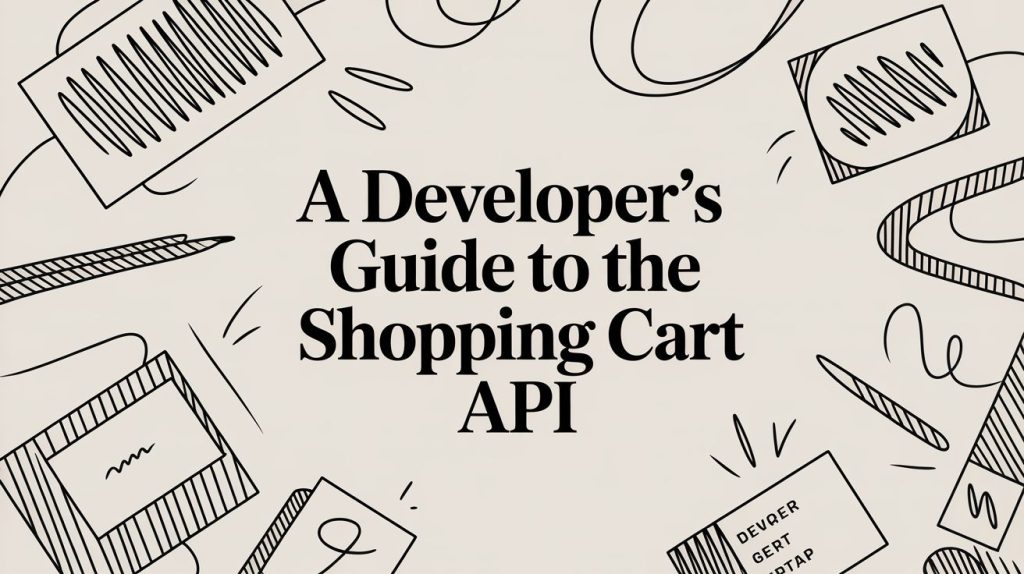
Do you know that Shopify is an online platform with approximately 5 millions shops across the world? The Shopify Developer API makes it possible for developers to create apps and extensions customized for the platform, thus contributing to its success.
Previously, software developers had to integrate with Shopify's REST API, but starting in 2025, Shopify provides a GraphQL API. Developers must now integrate with this API to access data from online stores built on the Shopify platform.
In this article, we'll explore a key feature of the Shopify developer API and explain how it works. Additionally, we'll share best practices and helpful tips on using this API and integrating Shopify data into your eCommerce software or application.
What is Shopify Developer API?
The Shopify Developer API is a set of tools and protocols that allow software developers to interact with and integrate data from Shopify's eCommerce platform into their eCommerce software, or systems. It provides access to Shopify important data, such as products, orders, customers, and inventory, enabling developers to build custom solutions, automate processes, and create seamless integrations with Shopify stores.
This API helps improve the functionality and capabilities of eCommerce platforms by allowing them to work with Shopify data more efficiently.
Using of the Shopify Developer API in your SaaS product is of great importance since it allows for multiple advantages from both you and your clients’ sides. One of the smart moves is to integrate with popular ecommerce platforms like Shopify.
Previously, software developers created integrations with the Shopify REST API. However, starting April 1, 2025, all new public apps must be built exclusively with the GraphQL Admin API. More details about the API structure and endpoints can be found in the official Shopify developer docs, which provide examples and best practices.
A store’s data can be accessed, and it can also be modified by the developers. This is achieved via the Shopify API, which involves things like products, orders, collections, customers, and more. The openness enables developers to configure and re-purpose such items into specialized purchase environments.
You can then receive notifications for any changes that may arise on the store’s database, such as the introduction of new products and the update of any already existing products. The API is also useful for viewing the store’s settings and reports.
Benefits of using Shopify API
As of 2024, Shopify's customer base has expanded dramatically, reaching over 875 million customers globally who prefer using Shopify on their PCs, smartphones, and tablets. It is extremely popular in America, the UK, Australia & Canada. It provides myriad opportunities for B2B SaaS providers.
Shopify API development can provide numerous benefits for businesses, including:
- Customization: The Shopify Developer API enables developers to build specific integrations or apps that are capable of improving a store’s performance. Therefore, businesses are able to give their customers an exclusive experience that relates well to them.
- Automation: With the Shopify developer API, businesses can be automated and include such things as order processing and inventory management. The process also helps save both time and resources, which can be channeled to other business aspects.
- Integration: The Shopify API enables software engineers to link their programs to a Shopify store via some common external software utilities. It facilitates the process while boosting API integration. For example, developing an integration with Shopify API for mobile apps means that such solutions can help online store owners who built their stores on Shopify platform provide users an additional, convenient way to shop.
How Does Shopify Integration Work?
Shopify API dev involves connecting your application with the Shopify platform so it can exchange and use store data. You will enhance the abilities of the software and give your client more advantages by synching it with Shopify through an API.
The term ‘Shopify integration’ means that one’s application would be able to exchange information with and utilize such data from Shopify stores as adding, editing, amending, or altering it.
Such an integration implies profound insight into the Shopify API, which is meant to enable users to browse through the shop settings, product collections, clients, orders, and other items linked to the store.
However, there is an easy way to link B2B software and Shopify quickly. That’s the unified shopping cart integration solution – API2Cart. Many APIs exist for manipulating data management. Some of these methods help generate an order list, product list, customer list, etc, from a Shopify store, update order information, and create shipments, among others.
How to Get Started Integration with Shopify via API2Cart
API2cart offers multiple API methods that allow developers to import product data from e-stores, systematically update orders, synchronize inventory across different sales channels, and create and update listings.
Developers can utilize various API2cart methods to import product information from stores, update orders in a consistent manner, synchronize inventory across multiple sales channels, as well as create/edit listings.
API2Cart allows software developers to seamlessly work with the Shopify REST API through its custom integrations and unified methods. This solution simplifies the process, enabling you to focus on main features instead of dealing with complex API configurations.
You will only have to register and get a free 14-day trial account to initiate integration with Shopify. Once you are registered, you can add any number of your clients’ stores and work effectively with them.
API2Cart proves to be a great choice for software providers dealing with order management, inventory, shipping, pricing, marketing automation, etc., with multiple stores or marketplaces simultaneously.
You can smoothly connect your software with the service for testing purposes during the 14‑day trial period. Lastly, you will have a chance to select from different quotations depending on your organization’s needs.
You can also link your eCommerce project to API2Cart and have immediate access to all data from several shopping platforms. Additionally, we provide detailed API docs, SDK, and tech support.
FAQs
Shopify GraphQL Admin API lets developers request exactly the data they need in a single query, making integrations faster, more efficient, and better suited for complex SaaS products. However, it requires a deeper understanding of GraphQL and query structure.
API2Cart abstracts these differences, allowing developers to work with Shopify data through unified methods without worrying about whether the underlying API is REST or GraphQL. This reduces development time and maintenance overhead.
API2Cart removes these pain points by abstracting Shopify API changes behind a unified interface, so developers can focus on core product features instead of maintaining and updating Shopify-specific logic.



